Last Updated on November 22, 2022 by Rebecca Huff
Is unhealthy hair an indicator of poor health? Conversely, can healthy hair signs tell you something is up with your health?
Your hair is an often overlooked indicator of health.
It’s not always 100% accurate for reasons I'll share in this article, but for the most part, healthy hair means a healthy body.
When you see someone with great natural hair, most likely they have fairly good overall health. Regular exercise, good sleep, and plenty of green, leafy vegetables help.
But what if your hair isn’t that great? What if it’s thin, dry, or just lackluster? Is your body sending you a signal or could hair products and styling be the issue? You'll find answers to these questions, plus the products I recommend for the healthiest hair, scalp, and body, below.
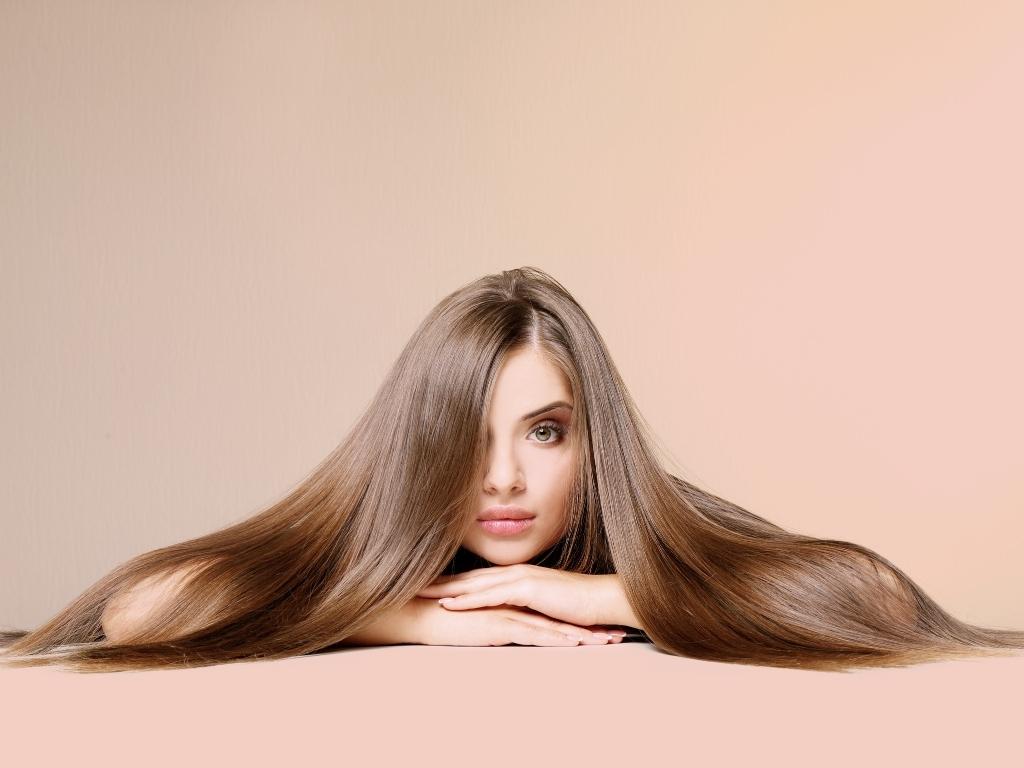
Signs of Healthy Hair
Healthy hair has some give, or elasticity. When you stretch your hair and it snaps back on release, it’s a sign of healthy hair. Here are some other signs of healthy hair:
- New hair growth – if you see short hairs around your hairline or some sticking up in your part, it is likely this is new hair growth; rejoice!
- A natural shine – shiny hair (without product) is a sign of healthy hair.
- Closed cuticle (smooth hair) – a cuticle is the outside layer of your hair strands and it can become damaged with heat styling.
- Minimal shedding – even the healthiest head of hair loses about 50-100 hairs daily.
- Healthy scalp – no sign of flakes or redness. A healthy scalp isn’t oily or dry and should not feel itchy or irritated.
- Rarely has tangles or detangles easily
Signs of Unhealthy Hair
The health of your hair can be affected by your genetics but also styling. There are clues to help you determine the health of your hair.
- Any itchiness, irritation, disruption of the skin or burning sensations could be a sign of an unhealthy scalp.
- Overly dry hair – Dryness isn’t always a sign of unhealthy hair, but if conditioning doesn’t help much, then it’s likely because your hair shaft is unhealthy.
- Frizz – Damaged hair cuticles often look frizzy and dry.
- Tangles easily or more than usual.
- Hair shedding – an unusual amount of hair in your brush, pillow, or drain after a shower.
- Thick hair at the roots with thinner hair at the tips.
Clues Hair Has Styling Damage Opposed to Bad Genetics
Damaged hair tends to be worse towards the ends of the hair strands, whereas bad hair genes lead to hair loss, thin hair, or early graying. Some signs of styling damage include:
- Split ends and breakage – hair looks a bit frizzy at the tips or noticeable breakage leaves strands of hair sticking out instead of laying in place.
- Very thirsty, dry hair. No matter how deep you condition the hair strands, they feel dry and brittle.
- Your hairstylist can help you keep an eye out for problems with your hair. If you see them often enough, they’ll be able to notice changes in the health of your hair.
Badly damaged hair may not be recoverable. In this case, it’s easier to cut the hair off for a fresh start. After cutting the damaged hair off, treat the new growth with natural products. Of course, you’d also want to change the styling method to prevent future damage.
Chemical treatments often cause irreparable hair damage and will need to be cut off to prevent further damage.
Hair Loss
Thinning hair can signify nutrient deficiency, disease, aging, or even bad genes. Here are some reasons why you may experience hair loss:
- stress and anxiety
- thyroid disorder
- anemia (iron deficiency) or other nutrient deficiency such as too little biotin, zinc, or protein.
- styling – tight braids and ponytails can lead to traction alopecia, and hair loss around the hairline.
Tangles Are A Sign of Unhealthy Hair
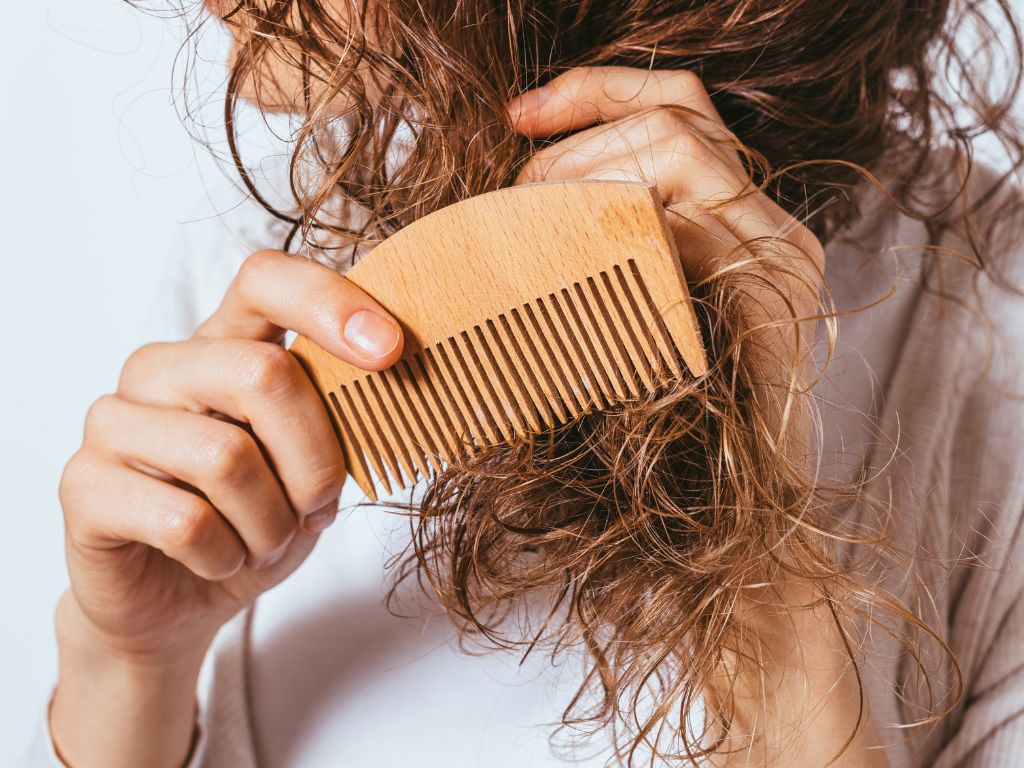
Fine hair is more prone to hair breakage and therefore leads to more damage. That is why toddlers and young children may often have lots of tangles. In this case, the culprit is not always hair care products. Although, many shampoos created for children can be harsh enough to dry out the hair leading to breakage, and more tangles.
While you may think that tangles are a common and natural occurrence, in actuality, they are a sign of damaged hair. Sleeping on a silk pillowcase can help.
Personal side note: as a child, my sister had very fine hair and lots of tangles. My hair was very coarse, like horses hair, it was also thick and had few tangles. After battling my sister's tangles, my mom finally decided to cut her hair shorter and make life easier for both of them. For the rest of her life, my sister kept her hair short because it was fine and easily damaged.
Damaged and dry hair lifts the hair cuticles and exposes them to the cuticles of nearby hair strands. This meeting forms knots and ends with tangled hair. Dry hair that lacks moisture, overuse of blow dryers and hot irons as well as chemical treatments such as bleaching, can result in hair that tangles more frequently.
Highlighting hair often leads to hair breakage as bleach strips the pigment from your hair shaft. Repeated bleaching often results in brittle hair with lots of tangles. Styling leads to further damage.
Hair Care for Healthy Hair
How you care for your tresses will depend somewhat on your hair type. Because each of us has a different texture, length, thickness, genetics, and style, we may vary how we care for hair.
Hair doesn’t have to be long to be healthy. However, if you prefer long hair, you’ll want to work to maintain healthier hair. Here's how to grow hair longer, faster.
To beautify, lengthen, and thicken your hair and improve the health of your scalp, schedule your haircuts according to the Lunar Calendar. I’ve been doing this for years, and my hair is still thick and long. Read more about my results using the Lunar Chart Haircutting Method.
Curly hair may have shrinkage as it dries, but it should not be frizzy. While it may not look as shiny as straight hair, curly hair can be incredibly healthy. Keeping it moisturized is key. Deep conditioning is one of the most important steps to achieving beautiful, luxurious, and naturally curly hair.
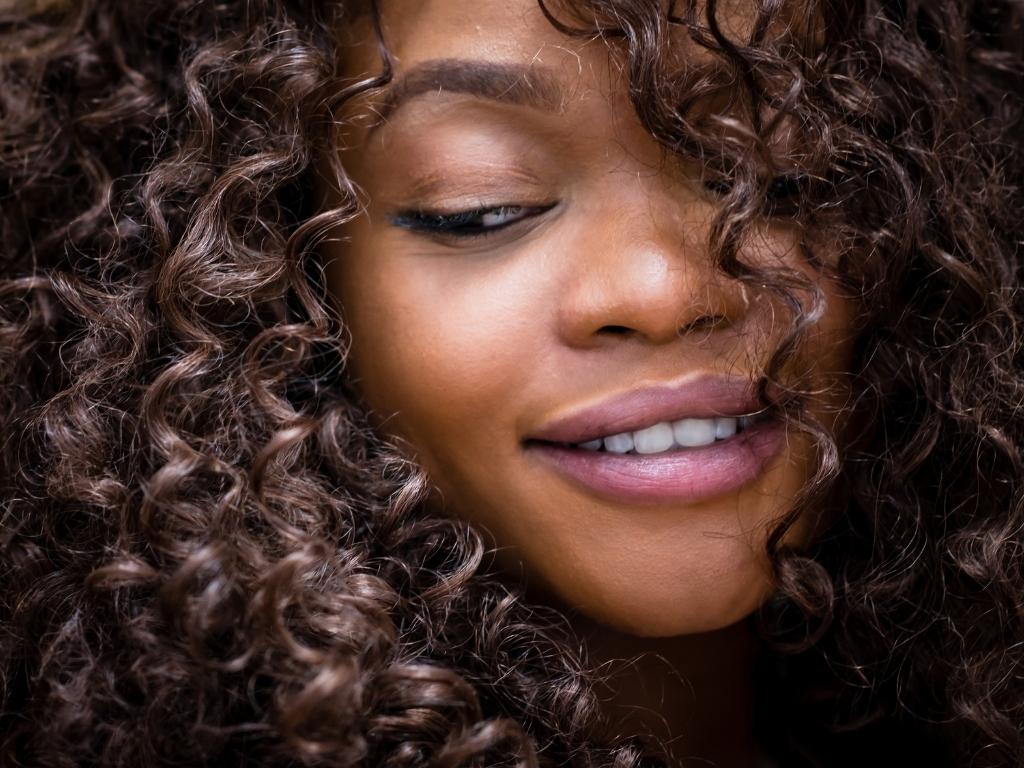
We all want to style our hair occasionally; however, overusing curling irons and other heat tools can cause damage. Heat on your hair can damage, dry, and fray hair cuticles. If your cuticles are already unhealthy, it can lead to permanent damage.
It is best to brush hair when it is almost completely dry. If you need to detangle, use a wide tooth comb and brush conditioner through the hair in the shower.
Opt for air-drying hair if possible for the least amount of damage. Also, avoid using irons on wet hair as this can cause more damage.
Sleeping with a satin pillowcase can help you avoid frizz. Going to bed with wet hair may also cause bends in the hair shafts that dry in place and lead to frizzy hair.
Can Unhealthy Hair Be Made Healthy Again?
Trimming damaged hair is the best way to improve the way hair feels. Split ends will continue to split unless they are cut above the damage.
To improve hair health, look at your hair care routine:
- Are you washing your hair too often? Too frequent washing can remove the natural oils that give your hair a healthy shine.
- Do you have product buildup on your hair and scalp? If so, consider using a detoxifying hair mask.
- Is it possible to allow wet hair to dry naturally instead of a blow dry? For curly hair types, this can make a huge difference.
- What styling tools can be used in place of heat tools? Sponge rollers and loose braids give soft waves or curls and leave behind less damage than heat tools.
- When styling your hair, use a heat protectant before your styling tools such as curling wands and flat irons.
- Consider adding a leave-in conditioner to help hydrate hair.
Supplements to Achieve Healthier Hair
B complex vitamins, iron, protein, and vitamin D are important for healthy hair. Eating a well-balanced diet with multiple servings of leafy greens and vegetables daily and protein will help.
Regarding supplements specifically geared toward healthy hair, dermatologists recommend B 12 and biotin. Avoid supplements that contain sugar or synthetic vitamins.
Following the Mediterranean or Paleo-type diet will give your hair all the nutrients it needs to grow and stay healthy.
Teens and Hair Products
My two youngest are both in that stage of growing up, taking an interest in their hairstyle and clothing, which means buying hair products. Hairspray is one of the most toxic styling products, containing polymers, solvents, propellants, and more.
Try using products with natural ingredients as opposed to these. Again, I prefer Morrocco Method for hair styling products as they do not contain harsh chemicals. (Use coupon code ORGANICMOM to save 25%)
Teens may also want to experiment with a variety of hair colors and styles. When this comes up in my house, my choice is to educate them, but not let it be the “hill I die” on or “dye on” haha – Instead of coloring hair down at scalp level, I encourage them to just dye the tips or choose the least toxic version of colorant. This is personal preference and as a parent, we each have to make that choice for our family.
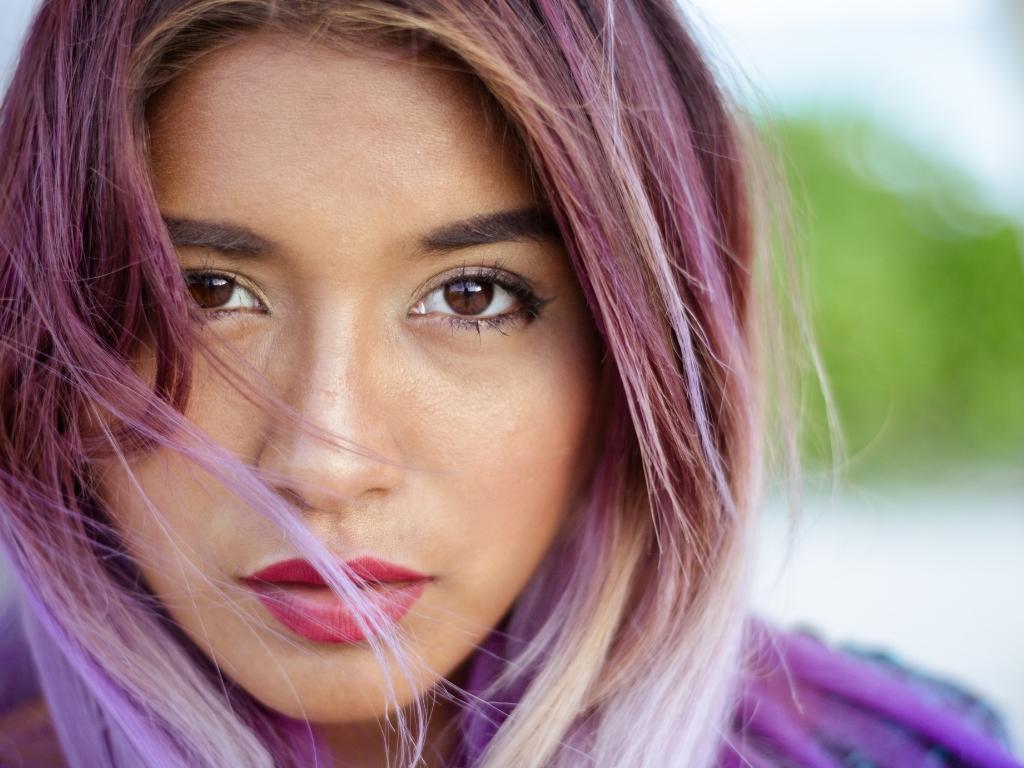
Genes and Hair Loss
I read a statistic recently that people can often lose 50% of their hair before it even becomes noticeable.
My aunt lost a significant amount of her hair in her 50s, I was a young adult then, but then I realized that women could go bald, too. (She married into the family, so there is no chance I got that gene!)
The first sign you might see is a changing hairline. The temple area may begin to recede.
Have you ever looked for changes in your hair line such as going from flat to more v-shaped? You can find out if hair loss is in your DNA as it can be passed down genetically from either of your parents.
This is good news because it means you can determine your likelihood of experiencing this issue early on and identify the strategies most likely to prevent your hair from falling out or help it grow back if it’s already started. There are specific lifestyle changes you can make now to counteract the negative effects of your genes.
You can check your genetic tendencies for hair loss with SelfDecode. Read my full review of Self Decode.
Personal Notes About Healthy Hair:
I was hard on my hair from my teenage years through my late thirties. Perms, highlights, daily styling, tight braids in the military, you name it.
When I got my first gray hair, I planned to have it covered up or camouflaged with highlights. My oldest son told me I’d be crazy to cover up my “wizard status, ” which was the end of my plans.
No reason to cover up gray! Going gray is a natural part of aging, as your hair follicles produce less color as you age. Your genes also play a role when your hair turns gray, which is why some people go gray in their 40s while others still hold onto black tresses well into their sixties!
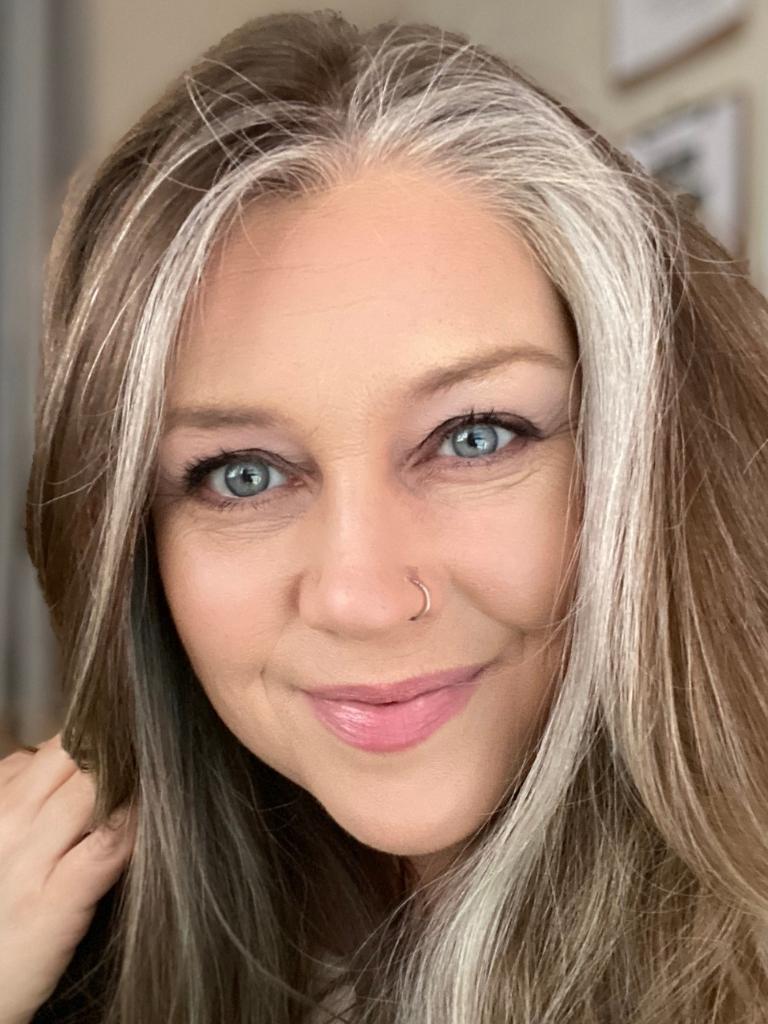
While highlights are harsher than hair color, both can damage your hair and health. Consider alternatives such as henna if you want to change hair colors.
Shampoo and conditioner can also change the health of your hair. If you’ve decided you have unhealthy hair, opt for more natural products instead of those with chemicals. Start with Morrocco Method 5 Elements Shampoos. (Save 25% with coupon code ORGANICMOM at Morrocco Method.)
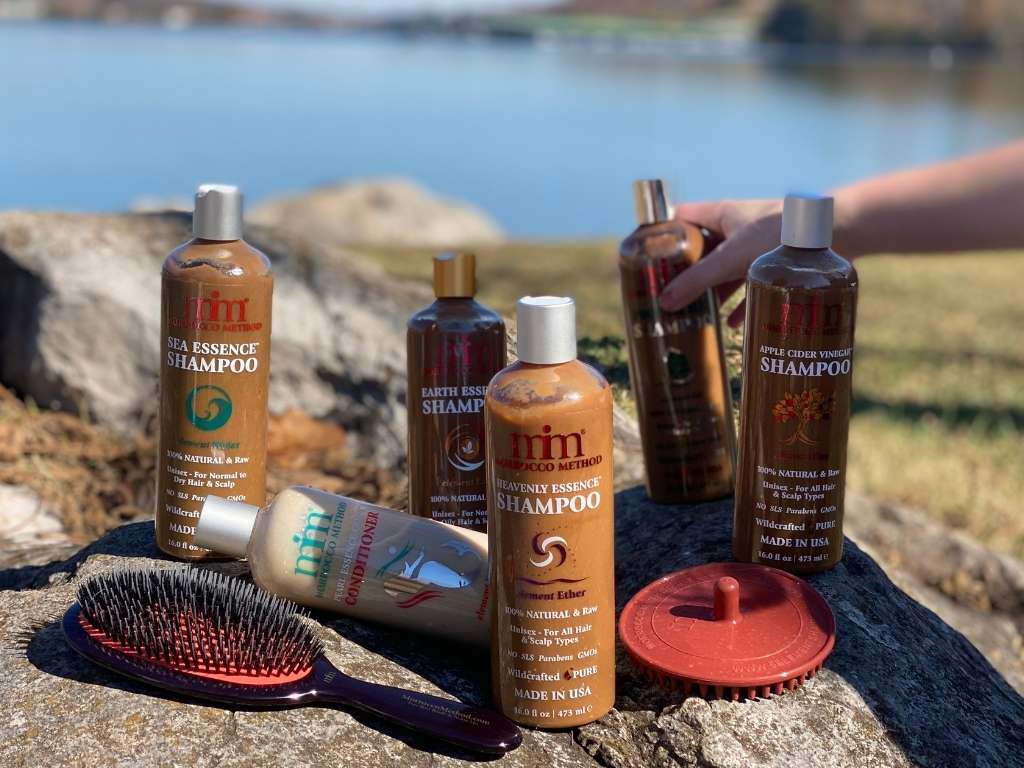
You might switch to a natural product to maintain or restore healthy-looking hair. Why compromise your health with chemical products when you can achieve radiant beauty with safe, all-natural hair care.
This is particularly important with issues such as dandruff and dry scalp. Even though I had pretty healthy-looking hair, my scalp was dry. I switched to Morrocco Method’s raw vegan hair products and noticed a huge difference in my scalp and the health of my hair. See my other posts below.

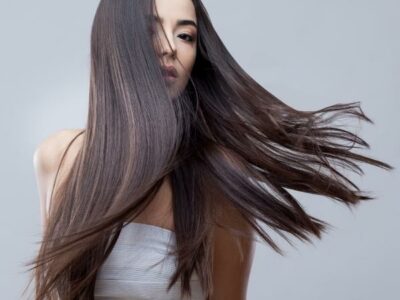
 How to be Ethically Fashionable
How to be Ethically Fashionable